What isn’t told about Babasaheb Ambedkar?
Freedom of mind is the real freedom. A person, whose mind is not free though he may not be in chains, is a slave, not a free man. One, whose mind is not free, though he may not be in prison, is a prisoner and not a free man. One whose mind is not free though alive, is no better than dead. Freedom of mind is the proof of one’s existence.
We must break the chains, once and forever. – Babasaheb Ambedkar
Last September (2009), when I was in Hungary on invitation from the Jai Bhim Network, Derdák Tibor – the founder of the network – offered me this book to read “Why Weren’t We Told?” written by Henry Reynolds. “Why Weren’t We Told?” is a scholar’s memoir describing the realities of race in Northern Queensland, Australia.
The author describes the journey of the natives of Australia. He raises many questions on the aboriginal history and why many truths were never told. He dwells on why Australian history books ignore aboriginal history, the same as Indian history books ignore Dalit history.
The book “Why Weren’t We Told?” motivated me to write this article on Dr Ambedkar, on what is less talked about and withheld from us. The problem is not what we don’t know, the more important thing is we don’t want to accept reality, all of us know only half the history and leave the other half unknown, and so the whole meaning of history gets changed!
Life of Babasaheb Ambedkar
Babasaheb was born in a caste that was (is still) considered lowest of the low. People used to say it was a sin to be born in this low caste, they would not offer him water, and say that if he sat in a cart it would become polluted. But this man framed the Constitution of India. His entire life was one of struggles and his personal life was so sad; he lost his first wife and sons.
Even then he did not lose his willingness to work for the social welfare of the people of India. The boy who suffered bitter humiliation in the hands of upper caste people became the first Law Minister in free India, and shaped the country’s Constitution.
The above written lines are the maximum limits (or I think I have already crossed the limits!) of what gets told about Dr Ambedkar. He is always portrayed only as a leader of SC/STs and much of his work apart from enlistment of socially; economically backward communities are not taught through schoolbooks or any other credible source. The ink dries from the pens of upper caste media when writing/publishing anything about Dr Ambedkar.
Dr Ambedkar’s contribution to Indian society is much more than what is usually circulated. His other major contributions in diverse fields are rarely articulated. His role in the establishment of Reserve Bank of India (RBI), reformation of Hindu social order, issue of Pakistan, labour policy, electricity and water policy, Damodar valley project, Hirakund project, The Sone River valley project, and post war economic plan (IInd world war) etc are little known to people.
Babasaheb Ambedkar and Post War Economic Planning
When IInd World war ended, there were many challenges for India, such as re-establishing the economy; including improvement in agriculture, development of industries, rehabilitation and re-deployment of defense services etc. For this, the Reconstruction Committee of Council (RCC) was established. Dr Ambedkar was a member of RCC and was assigned the role of the President of “Policy Committee for Irrigation and Power.”
Of great significance but less well known among [Dr] Ambedkar’s contribution to the nation was his direct participation in the formulation of objective & strategy of post-war economic plan & planned development of water and electric power resources in the country. [Dr] Ambedkar was directly involved in framing of the objective and strategy of economic planning and water and electric power policy as a Cabinet Member in charge of the Labour, Irrigation and Power portfolio during 1942-46, though he made a substantial contribution to the economic planning and water and electric power resource development in this position, surprisingly, this aspect of his contribution has hardly been studied.” (Source: Ambedkar’s Role in Economic Planning Water and Power Policy by Sukhadeo Thorat)
Babasaheb’s Role in Damodar Valley, Hirakund and the Sone River Valley Projects
If you ask any school going child, where Damodar Valley, Hirakund and the Sone River Valley projects are, and who inaugurated these projects, they’ll tell you the names of Nehru-Gandhi family, although they have nothing to do with these projects. (Check out the wiki page giving details that “Jawaharlal Nehru, prime minister of India, Dr B C Roy, chief minister of West Bengal and Sri Krishna Sinha, chief minister of Bihar, took personal interest to ensure early success of the project.”).
We have been taught in schools about these projects but we don’t find a word about Dr Ambedkar’s prominent role and contribution towards all these projects. Why weren’t we told?
Since 1930 emphasis has been increasingly placed on engineering practices, on the hydrological unity of a river basin on treating the basin as the unit of development of its water resources. Credit for multipurpose project (irrigation and generating electric power together) goes to Irrigation and Power Department, under the leadership of Dr Ambedkar.
Keeping in view the enhanced magnitude of such projects, it was keenly felt that the technical expert bodies available then at the centre weren’t adequate. Dr Ambedkar approved the Central Waterway and Irrigation Commission (CWINC) in March 1944, and subsequently by the Viceroy on April 4, 1945. Thus Dr Ambedkar helped build a strong technical organisation for the development of India. (Source: Ambedkar’s Role in Economic Planning Water and Power Policy by Sukhadeo Thorat)
If our houses are illuminated and if our fields are green, it’s because of Dr Ambedkar’s stellar role in the planning of these projects, on which rests a major part of India’s economy today. If there is such a concept as water-management and development in India, then the credit goes to Dr Ambedkar for ably using the natural resources to serve India. If it was not for Dr Ambedkar’s vision, one can imagine the situation of electric supply, irrigation and development of India.
Babasaheb Ambedkar and India’s Water Policy and Electric Power Planning
Almost everyone ignores the role of Dr Ambedkar as a Labour leader. Department of Labour was established in the year November 1937 and Dr Ambedkar took over the Labour portfolio in July 1942. The policy formulation and planning for the development of irrigation and electric power was the major concern. It was the Labour Department under the guidance of Dr Ambedkar, who decided to establish “Central Technical Power Board” (CTPB) for power system development, hydro power station sites, hydro-electric surveys, analysing problems of electricity generation and thermal power station investigation.
Dr Ambedkar emphasised on the significance and need for the “Grid System”, which is still working successfully even today. If today power engineers are going abroad for training, the credit goes to Dr Ambedkar again, who as a leader of Labour Department formulated policy to train the best engineers -overseas. It is a matter of shame that nobody credits Dr Ambedkar for the role he played in India’s water policy and electric power planning.
His Role in the Formation of Reserve Bank of India
Did you know Reserve Bank of India (RBI) came into picture according to the guidelines laid down by Dr Ambedkar? RBI was conceptualized as per the guidelines, working style and outlook presented by Dr Ambedkar in front of the Hilton Young Commission. When this commission came to India under the name of “Royal Commission on Indian Currency & Finance”, each and every member of this commission were holding Dr Ambedkar’s book named “The Problem of the Rupee – It’s origin and it’s solution.”
(The legislative assembly passed this under the name of RBI act 1934, its need, working style and its outlook was presented by Dr Ambedkar in-front of Hilton Young Commission. Read, “Evidence before the Royal Commission on Indian Currency and Finance” and “The Problem of the Rupee – It’s origin and it’s solution.” )
Now, walking through the streets of India, on most of the “State Bank of India’s” (SBI’s) street hoardings it shows Rabindranath Tagore as “The banker to this nation”, as if Rabindranath Tagore is the brand ambassador of SBI!
What hurts many of us is the picture of Mohandas Karmchand Gandhi on the Indian currency. We need to ask everyone what’s the contribution of these two leaders (Rabindranath Tagore and Mr. Gandhi) towards Indian currency, finance and economics, and who deserves to be there on the signposts or on Indian currency?
And have you ever noticed the language panel displayed on Indian rupee banknotes? Sanskrit language is there but not Pali language. Does RBI have any answers? First April is the day when RBI celebrates its foundation day, making April fools of common masses!
If a man with God’s name on his tongue and a sword under his armpit deserved the appellation of a Mahatma, then Mohandas Karamchand Gandhi was a Mahatma. – Babasaheb Ambedkar
Writing about who deserves the place on Indian currency reminds me of a Hollywood movie “Do the Right Thing” directed a way back in 1989 by Spike Lee. Movie revolves around the demand of Afro-Americans to place some pictures of black heroes on the “Wall of Fame” in a pizza shop (where all pictures are of Italian heroes as pizza shop owner is from Italy and very proud of that) as the pizzeria is situated in a black neighbourhood and sells pizza to black people.
At the end of the struggle Afro-Americans succeeded to have a picture of Malcolm X and Martin Luther King, shaking hands on the “Wall of Fame.”
Dr Ambedkar and United Nations
Did you know of the role played by Dr Ambedkar to raise caste issue at the international level?
Dalit leaders and Afro-American leaders since nineteenth century started drawing connections between Dalits of India and Blacks of USA. In 1945-46 when ‘League of Nations’ was preparing for the formal establishment of United Nations (UN), there were many marginalized groups from different parts of the world who were trying to submit memorandums. So that their concerns also gets reflected in the ‘Universal Declaration of Human Rights.’
At that time there was an exchange of letters between Dr B R Ambedkar and the prominent Afro-American thinker William Edward Burghardt Du Bois. In his book ‘The correspondence of W.E.B. Du Bois, Volume 3’ W.E.B Du Bois writes, “The necessity of a document of this sort is emphasized by the fact that other groups of people, notably from Indians of South Africa, the Jews of Palestine, the Indonesians and others are making similar petitions. I have on my desk a letter from Dr. [B.R.] Ambedkar of the Untouchables of India, in which he intimates that they may make an appeal.”
Dr Ambedkar was well aware of the Black movement as many of his professors/guides were from the Black community, like Herbert Apthekar and C. Vaan Woodward (Woodward said in his autobiography ‘Thinking Back: Perils of Writing History’, that Dr Ambedkar’s description of oppression of Untouchables in India encouraged him to write about the oppression of Blacks) and Dr Ambedkar knew that to some extent Indian Dalits are similar to Blacks of America –segregated, denied right to education, deprived of religious and political power.
Dr Ambedkar knew if all discriminated communities come together they can improve their status in society, also he knew how to bring together all the discriminated communities and pressurize leaders at UN to take concrete steps towards the emancipation of discriminated communities. There might have been a conspiracy to stop Dr Ambedkar from going to UN at that time, so this significant issue couldn’t get addressed.
Jai Bhim and Jai Hind
Did you know that “Jai Bhim” originated before “Jai Hind”? In his article “Jai Bhim and Jai Hind”, Dr K Jamanadas argues and gives reference that “Jai Bhim” came into picture before “Jai Hind”, not as the people think that “Jai Bhim” derives from “Jai Hind”. “Jai Bhim” was coined by Babu L. N. Hardas, a strong follower of Ambedkar; Chief Secretary of the Independent Labour Party and In-Charge of C.P and Berar.
He was elected legislator on ILP Ticket, in 1937, from Kamptee near Nagpur. He was one of the signatories to the “Poona Pact” and had participated in discussions with Gandhi following the Poona Pact. He was the Labour Leader and Founder of the “Beedi Kamgar Sangh” of C.P. and Berar. A writer, thinker, dramatist and a poet, Hardas, was also the editor of a Marathi weekly “Maharattha” and “Chokhamela Visheshanka”. He died young at the age of 35, in 1939.
I think, the slogan “Jai Hind” was given by Netaji Subhash Chandra Bose, for the first time, after the formation of Indian National Army in Burma, and a call was given to “Chalo Delhi” (”March on Delhi”). This was just before the end of Second World War in 1945. It is clear that Jai Bhim did not originate from Jai Hind. May be it is the other way round. (Source: “Jai Bhim and Jai Hind” an article by Dr K Jamanadas)
Another Important Fact about Dr Ambedkar: Why Weren’t We Told?
Did you know before handing over the work of drafting constitution of India to Dr. Ambedkar, work was assigned to many other prominent leaders of that time? But everyone declined/refused to work, as this was such a tiresome work and required lots of intellectual depth and hard work, which only Dr. Ambedkar could put in. (Source: Begumpura Sehar, weekly newspaper)
Did you know Dr Ambedkar had suggested division of Madhya Pradesh into northern and southern states also he had suggested division of Bihar way back in 1955 for the better development of states? After almost 45years both states were divided and Chhattisgarh and Jharkhand were formed in the year 2000. (Read Dr Ambedkar’s book “Thoughts on Linguistic States” for more detail) Dr Ambedkar was a far-sighted person and he had anticipated and provided solutions to many of the pertinent problems we are facing today.
Did you know along with Dr Ambedkar more than half a million embraced Buddhism leaving behind the inhuman caste practice of Hinduism? No-where in this world has ever taken place such a BIG mass conversion, not even any religious guru could do this magic!
The purpose of giving all this detail here is, to make Dalit-Bahujan aware of our rich heritage, as many of us don’t take things seriously, and have a habit of letting things go as they are going. But we need to ask WHY? We need to find more about the “truths of our rich history”, “our role models”, “our culture”, and “realities of caste” etc. Only then we can do something better for our society.
What I see as the purpose of hiding all these facts and great achievements of Dr Ambedkar is that it is aimed at distracting Dalit-Bahujans from the right path. And that Dalit-Bahujans don’t get inspiration from their own history and smash the upper caste hegemony. As Dr Ambedkar said, “Let the slave know that he is a slave and he’ll break the chains of slavery.”
It is no wonder that everyone called him ‘Babasaheb’, out of love and admiration. Bhimrao Ambedkar was the lion-hearted man who fought for equality, justice and humanity. Let’s pay homage to Dr Ambedkar and spread his ideas.
He who is not a slave of circumstances and is always ready and striving to change them in his favour, I call him free. One who is not a slave of usage, customs, of meaningless rituals and ceremonies, of superstitions and traditions; whose flame of reason has not been extinguished, I call him a free man. –Dr Babasaheb Ambedkar
Related articles:
- LL.D. Degree Certificate of Dr. B. R. Ambedkar from Columbia University
- Educational Biography of Dr B. R. Ambedkar
- When Babasaheb sought Shahu Maharaja’s financial support
- Church Law and the Future of Jai Bhim Network in Hungary
P.S.: In case you liked the above piece please click on Like button and share it with your friends!

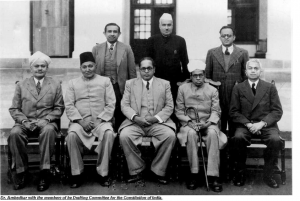







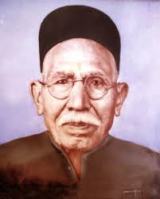
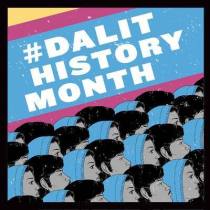
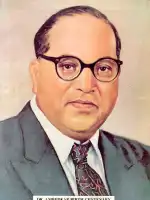


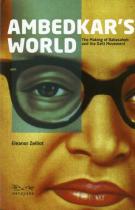
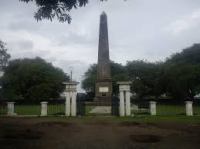
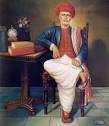


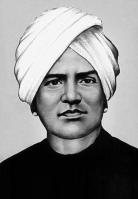

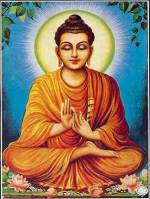

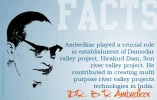

Great work Brother.
This author has done his job now, the readers should take up the task to spread the awareness to every Indians in right time, by right method with right words.
Lets behave like we are true follower of Babasaheb.
Metta
Sambodhan
LikeLike
Thanks for sharing all the information. India upper caste may try to deny this dalit messiah but there’s millions today that idealise DR.Ambedkar. I feel immense honour saying that Ambedkar was the first and last intellectual leader india has ever produced.
LikeLike
Thanx sir really we need to learn and stand for justice
LikeLike
Hello , friends you can contact me on face book my id is lalitmehra79@gmail.com
LikeLike
it is so clear that an indian is submearged mentally in all uncivilised rituals and practices and our mind is not free to think out anything.only a strong person can think out of that fight it out and guide us also.thank u sir .
LikeLike
Ayodhya ka faisla na RAM ne kiya na RAHIM ne…….ye kaam kiye mere BABA ke SANVIDHAN ne
LikeLike
excellent site for all BHIM RAO saab followers
LikeLike
thanx n many congrates…
LikeLike
i truly appreciate the efforts of the persons responsible for this work ,
Books written by Baba Saheb Ambedkar, are full of reason ,
and they the are spirit of the revolution that was started by him for
liberty , equality &fraternity
long live revolution .
jai bhim .
LikeLike
Commendable collection … Hats off to the author the website ……
A Million Thanks for sharing the work written by Dr. Babasaheb Ambedkar.
However still some e-books are incomplete . Its my humble request to you to complete those as soon as possible .
Thanks Again
Great Job
Prashant S. Kale
Nasik
LikeLike